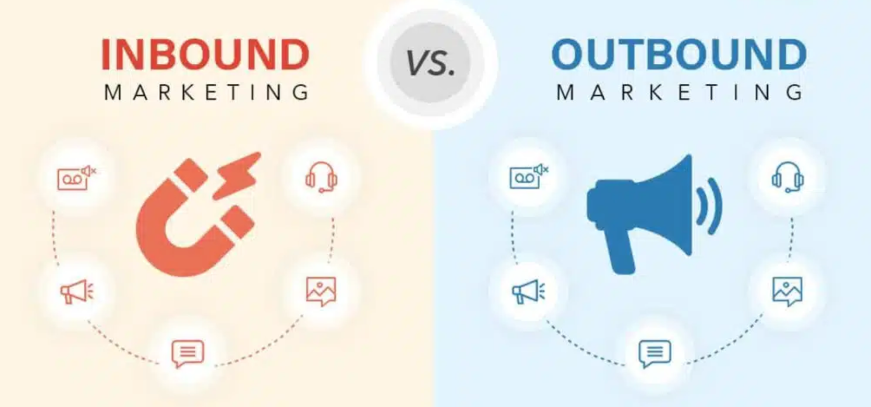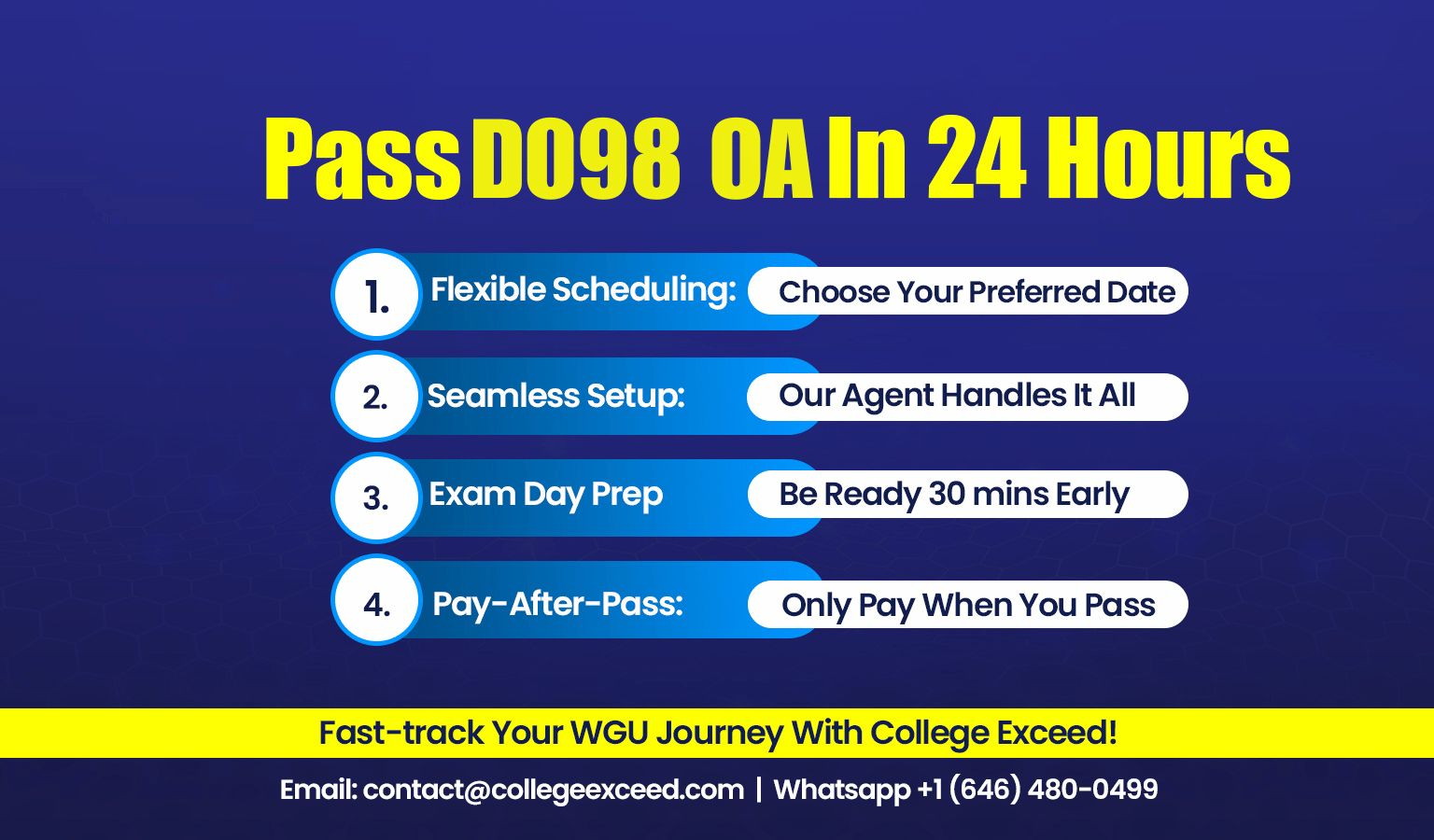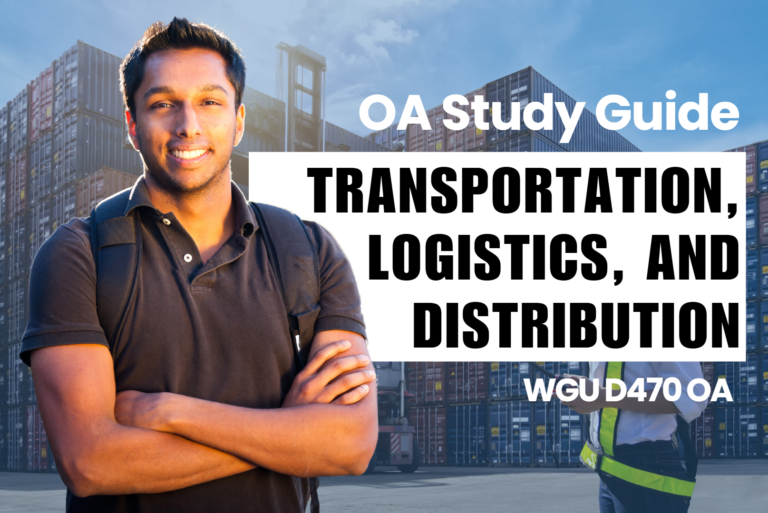WGU D098 OA Study Guide - 2025 | Mastering Digital Marketing📖
Welcome to our article Enthusiast of digital marketing! You could imagine the internet as a city where all these stores are located, all the big conglomerate industries fighting for everyone’s attention. But here’s the secret sauce: it’s not so simple as making much noise; it is much more about knowing when to speak to who. And that’s exactly what we’re going to dive into with three fascinating concepts: Five Planes of Web Development, Inbound Marketing and Outbound Marketing, or TOFU, MOFU, BOFU. Yes, those last ones might sound like some of those new trendy fad foods in restaurants but believe me, they aren’t. (Though they’re just as delicious… metaphorically.)
- First, we’ll unravel the Five Planes of Web Development. Imagine building a dream house—each step matters, from the foundation to the final coat of paint. That’s how websites come to life, too!
- Next, using Inbound Marketing (the quiet librarian) and Outbound Marketing (the loud announcer), we’ll explain how firms reach out and sell to new consumers.
- And last, but not the least, let’s explore TOFU, MOFU, and BOFU, a nice trip through the marketing funnel that’s almost as delicious as a meal.
Not only will you be able to humbly explain these concepts to your friends, But you will also enjoy the information to successfully complete your WGU D098 OA questions. Well, come and take your curiosity and a spoonful of humor, and let’s make digital marketing as cool as it is!
How to Use This Guide for the WGU D098 OA Exam?📖
The D098 Digital Marketing OA exam at WGU evaluates your understanding of web development strategies, marketing approaches, and customer journey stages. This guide simplifies the key concepts of the five planes of web development, inbound marketing, and outbound marketing, and TOFU, MOFU, BOFU to help you grasp the topics tested in the exam.
We also provide exam-style questions and practical applications to ensure you’re fully prepared for the questions on the WGU D098 OA exam.

Understanding the Five Planes of Web Development For D098 OA 📝
Web development can feel like a big puzzle, especially when you’re starting from scratch. Luckily, the Five Planes of Web Development provide a clear path to follow. These planes help us understand how to build a website or app step by step, starting from the basic idea and ending with the polished design. Let’s break it down so even a 6th grader can become a web development expert!

1. The Strategy Plane – Setting the Foundation
The strategy plane is like the foundation of a house. It is where we figure out why the website is being built and for whom. This phase involves setting clear goals and understanding the audience. For instance, an online shoe store may set its major objective in the coming year to have at least a twenty percent increase in its sales, and to achieve this, it develop an excellent and attractive website.
The information can be collected from surveys and interviews with the target population in order to understand their requirements, preferences, and problems. This ensures the website will meet its goals by following a standard procedure in the development process. Also, this phase relates the website aesthetics and operations to the company’s overall business model, even in the same way as the formation of a house’s basis precedes the creation of walls.
- Goal Setting: A question that needs to be answered is what do we want the website to do? Alternately, for an online store, the goal may be to achieve a target of 20 % of sales within a year.
- User Research: Who will use this website? What do they need? If it’s for kids, the design should be colorful and easy to navigate.
- Alignment with Business Goals: The strategy needs to match the company’s goals. If the company sells shoes, the website should make it easy to shop for shoes.
2. The Scope Plane – Drawing the Blueprint
The scope plane acts as the blueprint of the website, detailing what needs to be built. Like planning a house, this phase identifies features and content. For an e-commerce website, features might include a shopping cart, secure payment options, and customer reviews.
Content planning is equally crucial. This involves deciding on the type of information the site will provide, such as product descriptions or multimedia elements. By defining the scope, misunderstandings and missed expectations are avoided later in the project.
- Features: Decide what the website needs. An e-commerce site might need a shopping cart, payment options, and customer reviews.
- Content: Plan what information will go on the site, like product descriptions, blog posts, and images.
3. The Structure Plane – Organizing the Framework
The structure plane focuses on organizing the information and defining the user flow. Think of it as the framework of a house. It makes sure that whatever system is constructed above it, is stoic and refined for the user. For example, an online travel aggregator will sort content into Flights, Hotels, and Cars, to help users with orientation.
This phase also defines the user flow and tasks that focus on how users behave on the site – starting with the home page and ending with a purchase of a product. To support this structure, wireframes, and site maps are used to capture the effective experiences of users.
- Information Architecture: In what way is the material being divided? For instance, an accommodation-oriented website could have a navigation bar with links and names in files such as Flights, Hotels, Cars, etc.
- User Flow: How do users move through the site? For instance, how do they go from browsing products to checking out?
4. The Skeleton Plane – Arranging the Layout
The skeleton plane focuses on layout and functionality. Similar to how a house is built and rearranged to make it pleasing and comfortable for occupants, the various items on a website are well-placed to lead the clients. This phase entails the development of other objects such as menus, buttons, and forms with the most appropriate and effective mindset.
It ensures that all clickable buttons are of good quality and all the forms people need to complete look friendly and are not difficult to fill in. In other words, most people have a good interaction with the site, and their work can be easily done because of a good skeleton.
- Navigation Design: Creating menus and buttons so users can easily find what they need.
- Interaction Design: Making sure buttons, forms, and links work smoothly.
- Page Layout: Deciding the arrangement of text, images, and other elements to guide users’ attention.
5. The Surface Plane – Decorating the House
The surface plane is the final step, focusing on what users see and interact with. It’s like painting and decorating a house to make it appealing. Visual design plays a key role, involving the selection of colors, fonts, and images to create a cohesive and attractive look.
The user interface (UI) is also designed here. UI elements like buttons and icons must be visually clear and consistent across all pages. The surface plane transforms the underlying structure into a polished, visually engaging website that meets user expectations.
- Visual Design: Choosing colors, fonts, and images to make the site attractive.
- User Interface (UI): Designing buttons, icons, and other elements to make the site easy to use.
- Consistency: Maintaining a consistent style across all pages to create a cohesive experience.
Real-Life Analogy: Building a House
To make this easier to understand, let’s compare these planes to building a house:
- Strategy Plane: Laying the foundation (setting goals and understanding needs).
- Scope Plane: Drawing the blueprint (planning features and content).
- Structure Plane: Building the framework (organizing information).
- Skeleton Plane: Arranging the furniture (deciding the layout).
- Surface Plane: Painting the walls (adding visual appeal).
Each layer depends on the one before it, ensuring a solid and beautiful result.
Why the Five Planes Matter
Understanding these planes helps create websites that are not only functional but also user-friendly and visually appealing. For example, if you skip the strategy plane, you might build a site that looks great but doesn’t meet user needs. Similarly, skipping the scope plane could lead to missing features or unnecessary extras that bloat the site.
Importance For D098 OA
The Five Planes of Web Development provide a clear roadmap for creating amazing websites. By starting with a solid strategy and working step by step, you can build a site that’s both functional and beautiful. Whether you’re designing for fun or aiming to ace your WGU D098 OA questions, understanding these planes will set you on the path to success. So, grab your tools and start building your web development house today!
Understanding Inbound and Outbound Marketing For D098 OA 📝
Marketing is like communicating with an audience, and there are two main ways to do it: the two are inbound marketing and outbound marketing. These two approaches are different but their goal is to attract customers and grow of business. Now, let’s talk about what each of them is and how it operates.

What is Inbound Marketing?
Inbound marketing is more like patiently answering a friend’s questions. It is not about declaring to the potential customers how good is the product, but about building up the worth of such a product. The goal is to engage the audience and to do that you have to satisfy their need and provide a solution to their query. For instance, you own a bakery and then change to a blog about how to bake cakes. Should your topic be on baked meals then your group of people will be bakers and those who bake, such people will follow your advice because you were honest with them by giving them tips.
Inbound marketing uses methods like:
- Content Creation: Writing blogs, creating videos, or designing infographics that answer common questions or provide solutions.
- Search Engine Optimization (SEO): Making sure your website shows up in search engine results when people look for related topics.
- Social Media Engagement: Sharing interesting posts and responding to comments to build a connection with your audience.
The idea is to build relationships and trust so that when someone needs what you offer, they’ll choose you. It’s like having customers come to you because they’ve already seen your value.
What is Outbound Marketing?
Outbound marketing, on the other hand, is like making an announcement. You’re reaching out to people directly to tell them about your product or service. This approach is more traditional and includes things like TV ads, billboards, and direct mail. For example, if your bakery puts up posters around town, that’s outbound marketing.
Outbound marketing relies on methods such as:
- Advertising: TV and radio commercials, print ads, and online banner ads.
- Cold Outreach: Sending emails or making phone calls to people who haven’t shown interest yet.
- Event Sponsorship: Placing your brand in front of an audience during events or activities.
This method works by reaching a large number of people at once. Even if only a few are interested, it can still lead to sales. It’s like casting a wide net to catch fish.
Comparing Inbound and Outbound Marketing
While both types aim to attract customers, they work differently:
Feature | Inbound Marketing | Outbound Marketing |
Approach | Pulls customers in with valuable content | Pushes messages out to a broad audience |
Cost | Often cost-effective with long-term strategies like SEO | Requires higher budgets for ads and sponsorships |
Audience | Targets people already interested in your product | Reaches a broader, less specific audience |
Engagement | Builds trust and relationships over time | Focuses on immediate attention and outreach |
Examples | Blogs, social media, SEO | TV ads, billboards, cold calls |
Why Both Matter
Both inbound and outbound marketing have their place. For example, if your bakery is new, outbound marketing can quickly spread the word. Once people know about you, inbound marketing can build a loyal customer base by offering value over time. Combining the two creates a balanced marketing strategy.
Real-Life Example
Let’s say you’re launching a new line of cupcakes:
- Inbound Marketing: Learn how to bake and decorate cupcakes, and begin writing a blog about it and later sharing a post on different social networks. Use SEO keywords such as; best cupcake recipes.”
- Outbound Marketing: Place flyers in coffee shops in the area and place an advertisement in a newspaper about the launch.
So by using both methods, you will be able to reach people who need cupcakes or people who didn’t really realize they needed cupcakes until they saw the ad.
Importance For D098 OA
It is where understanding the differences between inbound and outbound marketing really comes in handy. All these could help in reaching out to the customers and increase your sales whether you are blogging to answer some customer queries or even if you are airing a TV advertisement. With these two you can come up with a solution that will fit every situation in the country. Using these tips, you’ll be prepared to answer your WGU D098 OA questions clearly and understand marketing strategies!
Tired of reading blog articles?
Let’s Watch Our Free WGU D098 Practice Questions Video Below!

Understanding TOFU, MOFU, and BOFU in Digital Marketing For D098 OA 📖
Digital marketing itself can be a challenging process, but when it comes down to it, there’s the marketing funnel which consists of TOFU, MOFU, and BOFU. They are the state that customers progress through before they finally buy a product. So let’s look at it in greater detail to get a better understanding.

What is TOFU (Top of Funnel)?
TOFU means Top of Funnel and this is the first step of the marketing funnel. This is where potential customers get to be informed about a particular need or challenge and about your brand. Think of TOFU as the starting point—you’re attracting a broad audience by providing helpful or interesting content without asking for anything in return.
At this stage, businesses focus on creating content that educates or entertains. The goal is to attract as many people as possible by addressing their needs or interests.
- Purpose: To create awareness and attract a wide audience.
- Content Types:
- Blog posts: “How-to” guides or informational articles.
- Infographics: Easy-to-digest visuals explaining a topic.
- Videos: Short, engaging clips that entertain or inform.
- Social media posts: Fun or thought-provoking content that sparks interest.
- E-books or white papers: In-depth resources on specific subjects.
- Strategies:
- Use SEO to make your content easily discoverable on search engines.
- Share posts on social media to increase visibility.
- Create content that answers common questions without pushing a sale.
For example, if you sell gardening tools, you could write a blog titled, “5 Tips for Growing a Perfect Vegetable Garden.”
What is MOFU (Middle of Funnel)?
While TOLA or Top of the Laddered Approach is where individuals are open to learning about a given topic, MOFU, the Middle of Funnel, is where such people become solution seekers. They know their issue and are considering what they can do to address it. This stage emphasizes the provision of more information to the leads who are expecting your products or services.
- Purpose: To create awareness of the products, and ensure those who may require them, have confidence in them.
- Content Types:
- Webinars: Live sessions explaining your product or service in detail.
- Case studies: Real-world examples of how your product helped someone.
- Comparison charts: Side-by-side evaluations of your product versus competitors.
- Email campaigns: Personalized messages with relevant information.
- Strategies:
- Deliver targeted content that answers specific questions.
- Position your business as a trusted expert in your field.
- Use email marketing to maintain engagement and provide value.
For instance, a gardening tool company might offer a free webinar on “Choosing the Right Tools for Your Garden” or share a case study about a customer who successfully transformed their yard.
What is BOFU (Bottom of Funnel)?
BOFU, or Bottom of Funnel, is the final stage where potential customers are ready to make a decision. This is where you focus on converting leads into paying customers by addressing their final concerns and showing why your product is the best choice.
- Purpose: To persuade leads to take action, such as making a purchase.
- Content Types:
- Product demos or free trials: Let people try your product risk-free.
- Customer testimonials: Share success stories from happy customers.
- Direct consultations: Personalized advice to help them decide.
- Special offers: Discounts or limited-time deals.
- Strategies:
- Highlight what makes your product unique and valuable.
- Use strong calls-to-action (CTAs) to encourage immediate action.
- Address any lingering doubts with clear and persuasive content.
For example, the gardening tool company might offer a free trial of their premium tools or share testimonials from expert gardeners.
Why TOFU, MOFU, and BOFU Matter
Knowledge of these stages aids businesses design an effective customer journey. TOFU gets people coming to you, MOFU makes them believe you, and BOFU makes them buy from you. When you map all your content and strategies to each of these stages, you facilitate clients to transition from one stage to another without much difficulty.
Real-Life Analogy: A Meal Course
Think of TOFU, MOFU, and BOFU as parts of a meal:
- TOFU: The appetizer that sparks interest and prepares you for what’s next.
- MOFU: The main course that provides substance and satisfies your curiosity.
- BOFU: The dessert that seals the deal and leaves you satisfied.
Importance For D098 OA
In fact, understanding TOFU, MOFU, and BOFU will serve as the foundation of a marketing funnel. It is possible that you will be able to attract, cultivate, and convert the consumer more efficiently when you have special patterns at each stage. If you’re getting prepared for WGU D098 OA questions, or are gearing up to go on the offensive, these strategies will serve you well. Start crafting your marketing funnel today and watch your business grow!

Wrapping Up Your Digital Marketing Journey with WGU D098 OA📖
Well done for the journey you have taken through the subject of digital marketing. – beginning from Five Planes of Web Development all the way to realizing Inbound and Outbound marketing and mastering TOFU, MOFU, and BOFU concepts – you have gone a long way toward expanding your knowledge.
These are not just ideas – these are the principles that define how companies communicate with their target audiences today. Grasping these concepts is crucial for your WGU D098 OA and beyond. Remember, each idea builds on the other, guiding you to think strategically and creatively in solving marketing challenges.
When completing your final OA, remember to go over these ahead of time. Do not shy away from making the effort to apply them to real-life scenarios; if there is a certain point that you do not fully understand, do not hesitate to go over it once more. You’ve got this!
Good luck on your WGU D098 OA journey. With the knowledge you’ve gained and your commitment to learning, success is just around the corner. Go ace that exam!






